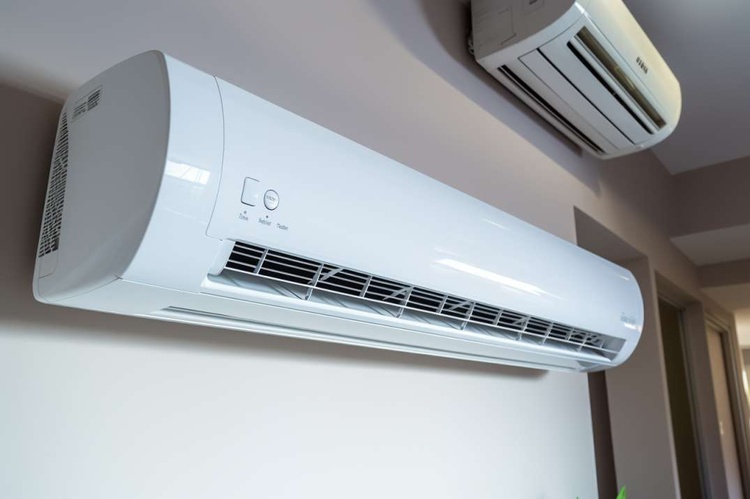Essential Homeowner's Guide to AC Installation & Care
Installing an air conditioner is a high-impact home upgrade that boosts comfort and indoor air quality while lowering energy bills when done right. This guide walks homeowners through AC types, how cooling systems operate, correct sizing and installation steps, HVAC integration, choosing local contractors, and routine maintenance to preserve efficiency and longevity. Learn what to ask installers, how to avoid booking errors, and which upgrades (insulation, duct sealing, smart thermostats) improve performance. This article is for informational purposes only and should not be considered medical advice. Please consult a qualified healthcare professional for personalized guidance and treatment.

What an air conditioner does and why it matters
An air conditioner reduces indoor heat and humidity to make living spaces comfortable and healthier. Units range from compact window or portable models to ductless mini-splits and full central systems. The type you choose influences energy consumption, noise levels, temperature consistency, and how your home’s HVAC performs overall. Replacing an old, inefficient unit often pays off in greater comfort and lower monthly energy costs—provided the replacement is properly sized and installed.
How cooling systems operate
Cooling systems use refrigerant to move heat from inside a home to the outdoors. The indoor evaporator coil absorbs heat from return air; the compressor pumps the refrigerant to the outdoor condenser coil where heat is released. Fans and either ductwork or refrigerant lines distribute cooled air. Efficiency is expressed with ratings such as SEER and EER for air conditioners and HSPF for heat pumps. Correct airflow, accurate refrigerant charge, and matched system components are essential; otherwise the unit may cycle excessively, work harder, and wear prematurely. Regular inspections help ensure systems remain safe and efficient.
Key steps for a correct installation
A successful installation is more than setting an outdoor unit and connecting lines. It starts with load calculations (Manual J or an accepted equivalent) to determine the cooling capacity needed for your home. From there, an installer should:
- Select a unit sized to the load calculation rather than simply matching the old equipment.
- Inspect and, when needed, modify ductwork or staging for a ductless installation.
- Verify electrical service, circuit sizing, breaker capacity, and proper grounding.
- Plan and install condensate drainage to prevent water damage and mold.
- Charge the refrigerant to manufacturer specifications and check for leaks.
- Ensure clearances, vibration isolation, and correct mounting to avoid noise and premature wear.
- Calibrate the thermostat and verify system controls.
Ask your installer to provide documentation of the load calculation and to register any manufacturer warranties. Poor installation can negate the benefits of a high-efficiency system, so workmanship matters as much as equipment quality.
Integrating the new AC into the HVAC ecosystem
Installing a new air conditioner is a chance to address broader home performance factors: insulation, duct sealing, and controls. Sealing and insulating ducts reduces distribution losses and short cycling, improving comfort and saving energy. Adding attic or wall insulation often reduces the required cooling capacity and running time. Smart thermostats, zoning systems, and improved filtration enhance control and indoor air quality. Treating installation as part of an overall HVAC upgrade helps the system deliver consistent comfort and can increase home resale value.
Choosing a local installer and avoiding booking issues
Select contractors who are licensed, insured, and ideally trained by the equipment manufacturers they install. Check references, read reviews, obtain multiple written estimates, and request clear timelines and warranty information. Many companies use online booking systems; under high demand these systems may return errors like “Too Many Requests” or other API-related failures. If that happens, try refreshing after a short wait, clearing cache, switching browsers or devices, or call the company to secure an appointment. Keep records of communications and signed estimates so expectations and responsibilities are clear.
Ongoing maintenance to preserve performance and efficiency
Routine care keeps your air conditioner running efficiently and helps avoid unexpected failures. Homeowners should:
- Replace or clean filters every 1–3 months, depending on use and filter type.
- Keep outdoor condensers free of leaves, grass, and debris.
- Arrange annual professional tune-ups before peak cooling season for refrigerant checks, airflow measurements, electrical tightening, and safety control tests.
- For ducted systems, periodically inspect, seal, and clean ducts to limit losses and improve indoor air quality.
Well-maintained equipment runs longer, uses less energy, and maintains better indoor air quality than neglected systems.
Typical cost ranges
| Item | Typical Price Range (USD) |
|---|---|
| Window or portable AC | $150 – $800 |
| Ductless mini-split (per zone) | $800 – $3,500 |
| Central AC unit (equipment only) | $1,500 – $5,000 |
| Full central system replacement (installed) | $3,000 – $12,000 |
| Professional tune-up | $75 – $200 |
Costs vary by brand, capacity, installation complexity, and local labor rates. Prices above are estimates and may not reflect your exact situation.
Final considerations
A reliable air conditioner installation combines correct equipment selection, precise sizing, skilled installation, and regular maintenance. Think beyond the outdoor condensing unit: address ductwork, insulation, controls, and filtration to maximize comfort and efficiency. Vet local contractors for credentials and clear estimates, and keep a written record of work and warranties. With informed decisions and routine upkeep, a new air conditioner can deliver comfortable indoor temperatures, better air quality, and energy savings for years.
This article is for informational purposes only and should not be considered medical advice. Please consult a qualified healthcare professional for personalized guidance and treatment.






